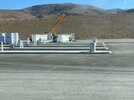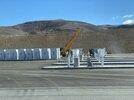EVSteve
110% Solar Powered
.....
If the ROI works out, this could mean the end of tuck stops as we know them, and independent trucking too. Independent truckers could be reluctant to invest in Tesla semis, and might have trouble charging if they do. Big truck stop chains might invest in megachargers themselves, but truck stops don't have all that warehouse roof area to cover with solar panels. So they'd be more dependent on the grid. Meanwhile the market for traditional services would be shrinking, which would hurt their ability to invest in utility-scale solar for themselves.
Of course that's all highly speculative, and could take years to play out — if it happens at all.
There’s more to truck stops than just a place to fuel. Drivers are bound by the federal hours of service regulations. They have 11 hours of driving time which needs to be used within a 14 hour window after coming on duty. A 10 hour break is required to reset that clock as well as a 70hr limit in an 8 day period that can be reset with 36 hours consecutive off duty time.
Lots of drivers utilize trucks stops for showers, laundry, meals, leisure etc. some have massage therapists, gyms, spas, etc.
As for the independent drivers yes those who refuse to adapt will be driven out -no pun intended- by running costs. Many however run under lease to large carriers. Point being the large trucking companies will not completely remove independent drivers.
The only thing that would completely change the industry would be 100% driverless transport trucks. Although in my mind I have a vision of senior drivers sitting in cubicles connecting remotely to fleets of driverless trucks correcting errors which the software cannot figure out on its own. Pipe dream perhaps.




